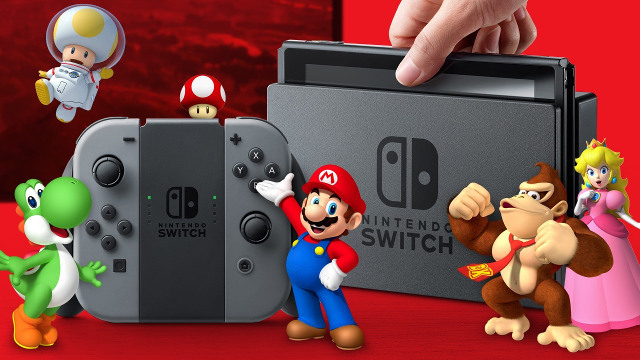After being a Wii U owner for four years, my expectations for the Nintendo Switch's online capabilities were set reasonably low. I learned over time that Nintendo doesn't take online multiplayer seriously, or at least not seriously enough to meet modern expectations and standards.
But then there was news that Nintendo will charge for online access starting in Fall 2017. Gamers were largely conflicted about the move, but most recognized that it signaled great potential for Nintendo to set itself on an equal bar to Microsoft and Sony. If you have to pay for it, it has to be good, right?
The problem is that we're already two months into the Switch's life cycle and every demonstration of its online capabilities has been underwhelming thus far.
It all started with the Splatoon 2 Global Testfire weekend in late-March. Having missed the first Splatoon, I was sold on the idea of playing a competitive Nintendo shooter with friends and co-workers. So, I downloaded the nearly half-gigabyte beta client and loaded the game up.
As my friends and I anxiously tried to join a lobby together, we began to realize that there was no way for us to group up. Although it wasn't made clear at the time, lobbies were unsupported by the beta. We were left to play alone, and so we did.

During my time playing Splatoon 2 I was frustrated, not only by the loneliness of not being able to join my friends or speak to other people in the game, but its peer-to-peer infrastructure. I'm used to playing games like Counter-Strike: Global Offensive and Battlefield 1 where everyone in a match connects to a dedicated server. This ensures everyone has equal access to low latency, in addition to hosting responsibility being removed from clients.
Peer-to-peer has earned a reputation for being lackluster, especially in the case of fast-paced or twitch-oriented games like For Honor. On the Switch its execution is particularly alarming, though. Out of the box the Switch is only capable of connecting to the internet via Wi-Fi, as there is no RJ-45 jack available without purchasing an optional peripheral. This means that in almost all cases peer-to-peer connections are run using wireless, a technology that "works" but has remained unreliable over the years—Wi-Fi connections are prone to packet loss, low throughput, and interference, and any of these three things can completely debilitate an online multiplayer experience.
With that said, at the end of the day I recognized that this was only a beta. I was willing to give Nintendo the benefit of the doubt.
Unfortunately, these issues haven't gone away with the full retail release of Mario Kart 8 Deluxe. As the first high profile Switch exclusive with multiplayer functionality, it has been a poor demonstration of what Nintendo is aiming for. Once again, peer-to-peer is employed in full-force, connectivity problems are often encountered, and you currently can't create a lobby with your friends.

Mario Kart 8 Deluxe was the perfect opportunity for Nintendo to make a great impression with its advances in online multiplayer design. This is a game that lends itself to incredibly exciting social interactions where comeback victories, funny moments, and high proficiency are demonstrated often. It could even have a casual eSports audience given its popularity, but that is never going to happen now given the large amounts of rubber-banding and server woes that dominate the current landscape.
It's frustrating to bear witness to such unused potential. Nintendo is clearly making a lot of money from these releases. Money isn't the problem. So, what is?
Later this year we'll get online lobbies on the Switch—which are yet to be demonstrated—, and hopefully a few other neat features. However, peer-to-peer reliance and Wi-Fi hosted connections aren't going away from what we can tell. And therein lies the problem with Nintendo's proposition to charge for online.
What's most baffling about this is how many examples there are of online done right. Nintendo of America's headquarters is just a few miles down the road from Microsoft, Valve, and dozens of highly successful gaming development studios. It has access to resources to make for the greatest online Splatoon and Mario Kart experiences ever. Instead, it chooses to do just enough as to make online play possible, but nothing more.
So, why should we pay for online access on the Switch? Well, if you want to enjoy Splatoon 2, ARMS, or any other multiplayer-centric releases coming to the Switch, you have no choice. Outside of that, there doesn't appear to be any great reason to invest in the service, and that's incredibly disappointing.











